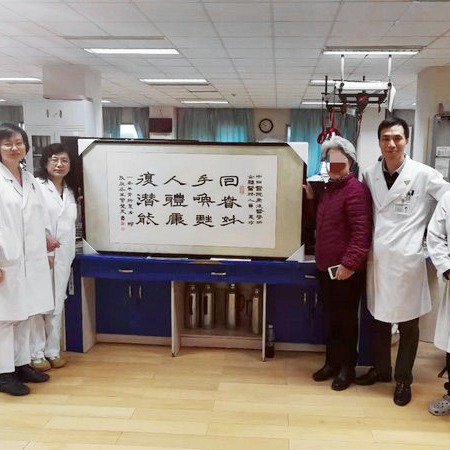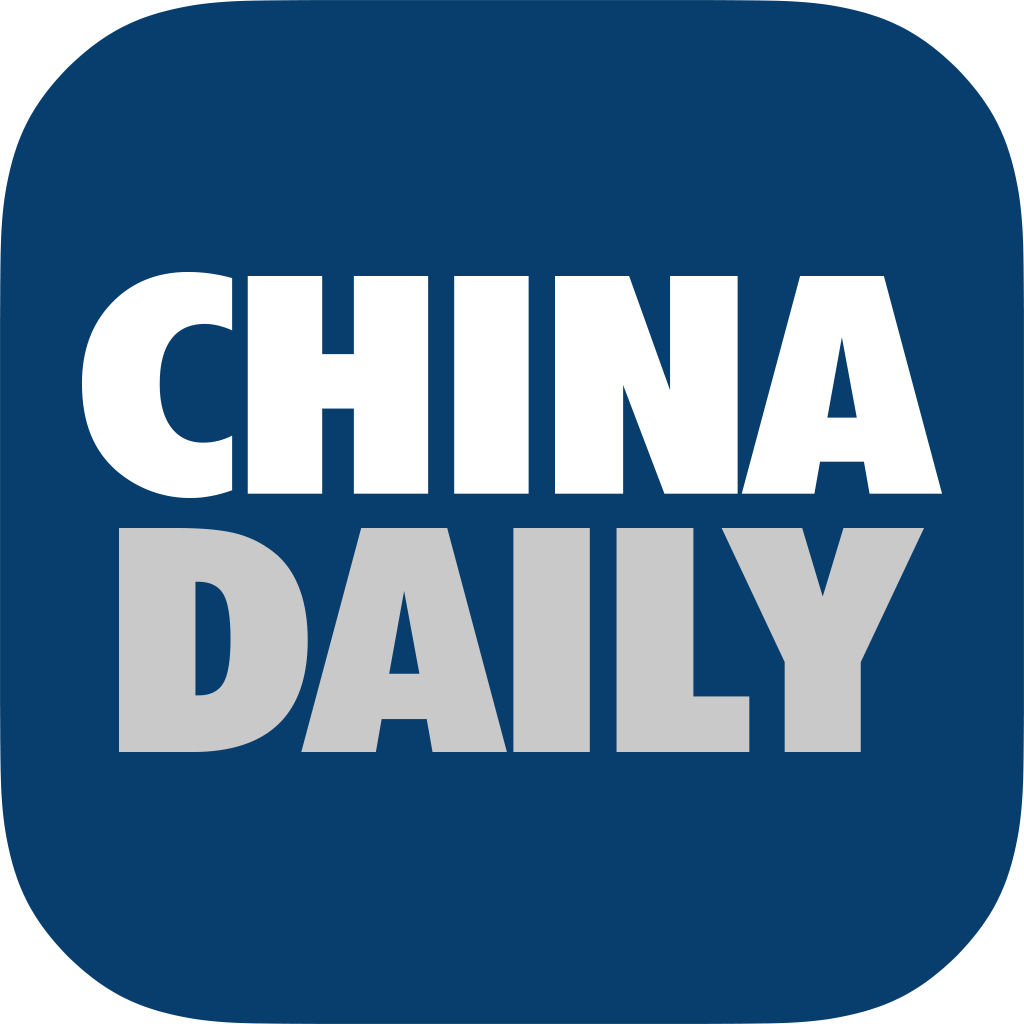



"Rehabilitation can be needed at some point in anyone's lives after injury or surgery. Those infected by COVID-19 also need such medical treatment," Guo Jingwei, chief physical therapist of the Rehabilitation Medicine Department of the China-Japan Friendship Hospital in Beijing, told China Daily Website on Jan 14.
At 8:00 am, Guo walks in the outpatient department, a large gym-like hall at the hospital, gently greeting a senior citizen lying on a bed.
After thoroughly checking with the patient about her situation, the therapist starts guiding the woman to do some exercises.
This is Guo's daily routine in the past two decades since he graduated from the Shanghai Sports University in 1996.
"Even now, many doctors and nurses misinterpret the rehabilitation treatment," said Guo, "considering it as, say, massage, acupuncture or physical treatment."
"In fact, rehabilitation is a larger field. It focuses on optimizing people's functioning and reducing disabilities through designed interventions. We aim to give patients a comparatively normal life, a life that they can enjoy the basic pleasures as a human. "
To cure sometimes, to relieve often, to comfort always
The World Health Organization defines rehabilitation as helping "a child, adult or older person to be as independent as possible in everyday activities" and enabling them to participate in education, recreation, work and "meaningful life roles such as taking care of family".
According to Guo, rehabilitation can help patients recover in a more efficient way after surgeries.
"With the intervention of rehabilitation, the chance for a patient who receives organ transplantation to survive is higher. It also works on many other operations," said the therapist.
"At present, in our hospital, it only needs 24 hours for a patient to leave bed after a rectal surgery with the help of rehabilitation. In the past, it took many days."
However, it is commonly believed that a successful surgery is the end of complete cure. The process to restart living like healthy people is often left to the patients themselves, as many still have no idea about rehabilitation and overlook the necessity of such medical treatment.
In 2018, Guo and his team received a 60-something woman patient who just had an internal fixation in one arm.
As an old Chinese saying goes, "one hundred days needed to recovery from broken bones", the senior citizen thought her wounded part would heal after resting for some months.
She tried to follow the advice from doctors to do some exercise to accelerate the recovery but didn't find a correct way.
"And it still hurt badly when the patient moved her shoulder and arm after two months' rest," Guo said, "then she turned to us."
The rehabilitation department designed a recovery plan for the patient and guided her to do necessary exercises step by step according to her body situation.
"Overprotection of wounded part and lack of exercises after surgeries may cause new problems, such as joints stiffness and muscle wasting," said the physical therapist.
During the rehab treatment, the patient was also taught how to put on clothes and do other things in daily life to reduce the pain in her arm and shoulder, which was a part of occupational therapy of rehabilitation. Continuous psychological counseling was given as well to enhance the patient's confidence.
After almost three month's treatment, the patient eventually recovered and began leading a normal life as before.

Start late, develop quickly
"Our work is not widely understood even today. But more Chinese people now know rehabilitation when compared to 20 years ago," said Guo, who was one of the earliest academically educated physical therapists in China.
As early as the 1950s, there was physical treatment in Chinese hospitals, yet modern rehabilitation medicine was introduced to the country only in the 1980s, much later than many developed countries, such as Japan and the US.
"The development of rehabilitation goes hand in hand with economy, as people's demand of a high-quality life gives rise to the need of rehabilitation. Thanks to the blossoming economy, rehabilitation medicine has developed quickly in the past 40 years."
In 1982, Sun Yat-sen University in South China's Guangdong province launched the first rehabilitation research center in China. And the Chinese Association of Rehabilitation Medicine was founded in 1983 with its office set in the China-Japan Friendship Hospital. And the institution joined the International Rehabilitation Medicine Association in 2001.

Chinese government also provided a strong hand to the rehabilitation medicine. In 2011, the Ministry of Health of China (now the National Health Commission of China) issued a policy, requiring Grade II and III hospitals (Chinese hospitals are classified into three levels- Garde I, Grade II and Grade III, among which the last group is the top level) must be equipped with rehabilitation medicine department. Such policy further pushed the rehabilitation medicine to boom nationwide.
Friendly rehab treatment from Friendship Hospital
As a Grade III Level A hospital, the China-Japan Friendship Hospital launched the rehabilitation medicine department in 1984 when it was established.
At first, it only had rehab treatment to a limited number of diseases, such as the ones related to nerve system and cervical and lumbar spines.

"And now our rehab treatment covers more operations, including organ transplantation and cardiac operations," Guo said.
"We have larger and better equipped rehabilitation centers in both north and west branches of the hospital. There are children-friendly rooms that were specially decorated to give the small patients a safe environment. The physical therapy to help postpartum moms has been added too."

After the epidemic, the hospital's rehabilitation medicine department also came up with a series of therapies for the COVID-19 infected patients.
Since the therapists' ability to communicate with the patients and to comfort them is required during rehab treatment, the atmosphere in the hospital's rehabilitation center is often very friendly.
"In some way, the relationship between patients and medical workers in our department is the most harmonious one in the hospital," Guo said.

A promising future ahead for rehabilitation
Also, as an associate professor at Beijing University of Chinese Medicine, the physical therapist's daily work includes teaching young students.
Guo would ask the three to five students who follow him every day, to analyze the situation of the patient who was being attended to let them master the skill in real cases.
"These young people are the future of Chinese rehabilitation medicine," the 47-year-old therapist said.
"Academically educated therapists are strongly needed in many community hospitals and remote areas in China. The need of rehabilitation is only increasing as Chinese society is aging at a fast rate."
As 2021 marks the first year of the 14th Five-Year Plan (2021-25), which proposes to build a healthy China and actively respond to aging population, Guo showed his sanguine attitude to the development of rehabilitation in China.
"From birth to death, rehabilitation relates to the circle of everyone's life. For the foreseeable future, such medical treatment will be increasingly demanded as Chinese people's life quality improves."



If you have any problems with this article, please contact us at app@chinadaily.com.cn and we'll immediately get back to you.